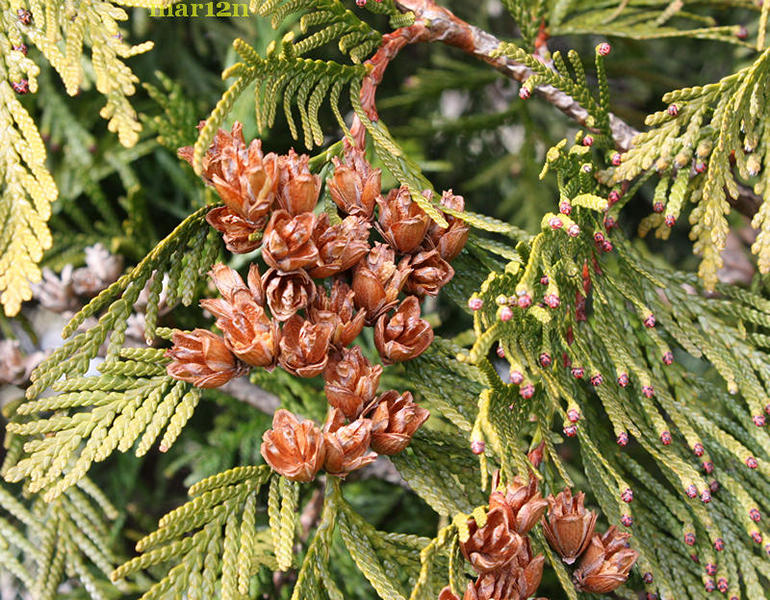Green Giant Arborvitae – Thuja ‘Green Giant’
These Green Giant Arborvitae twins are 13 years old
These Green Giant Arborvitae were spewing visible clouds of pollen from their male cones on a spring day in late March. I’m glad I’m not allergic to pollen because these giants were really pumping it out. If you’ve ever kicked a ripe puffball fungus you’ll know what I mean – but these trees are covered with cones and a puffball is only a foot across maybe.
Evergreen, coniferous trees growing to 40 ft. tall, with stringy-textured reddish-brown bark. The shoots are flat, with side shoots only in a single plane. The leaves are scale-like 1-10 mm long, except young seedlings in their first year, which have needle-like leaves. The scale leaves are arranged in alternating decussate pairs in four rows along the twigs. The male cones are small, inconspicuous, and are located at the tips of the twigs. The female cones start out similarly inconspicuous, but grow to about 1-2 cm long at maturity when 6-8 months old; they have 6-12 overlapping, thin, leathery scales, each scale bearing 1-2 small seeds with a pair of narrow lateral wings.

Thuja species are used as food plants by the larvae of some Lepidoptera species including Autumnal Moth, The Engrailed and Juniper Pug. The foliage is also readily eaten by deer, which where deer population density is high can adversely affect the growth of young trees.
Arborvitae wood is light, soft and aromatic. It can be easily split and resists decay. The wood has been used for many applications from making chests that repel moths to shingles. Thuja poles are also often used to make fence posts and rails. The wood of Thuja plicata is commonly used for guitar soundboards. The foliage of thujas is rich in Vitamin C, and was used by Native Americans and early European explorers as a cure for scurvy. –adapted from Wikipedia
There are thirty (many monotypic) genera and 142 species in the family Cupressaceae, now widely regarded as including the Taxodiaceae, previously treated as a family. The Cupressaceae are found in the fossil record as far back as the Jurassic Period, about 210 million years ago.

